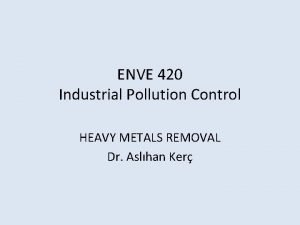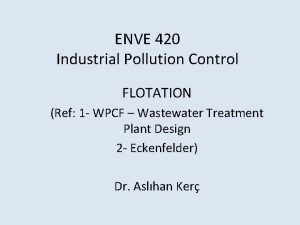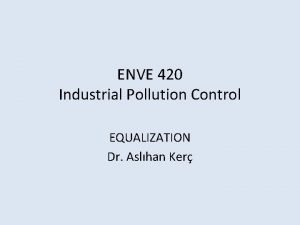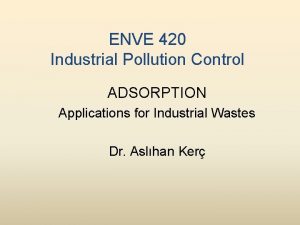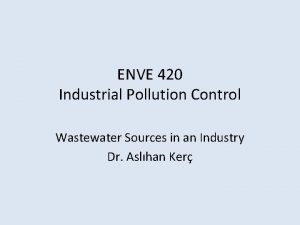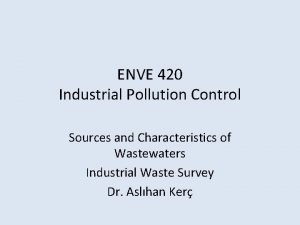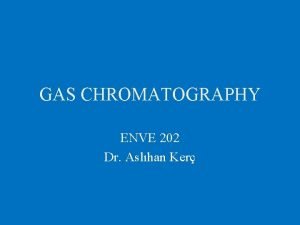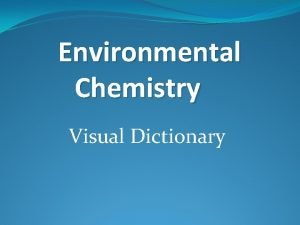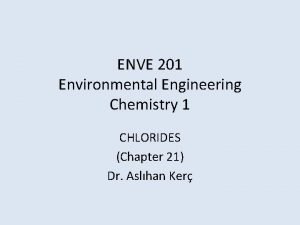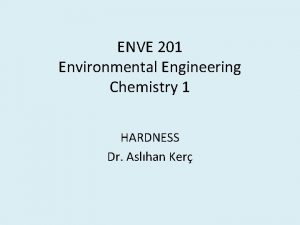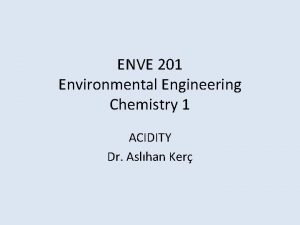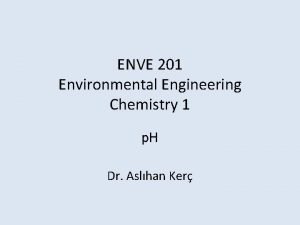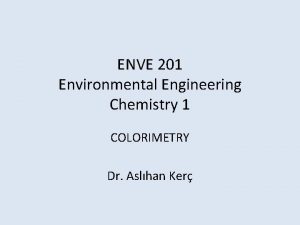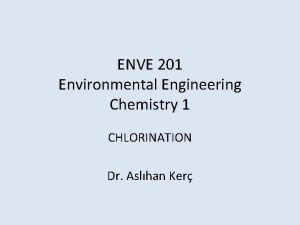ENVE 201 Environmental Engineering Chemistry 1 COLOR Chapter















- Slides: 15

ENVE 201 Environmental Engineering Chemistry 1 COLOR (Chapter 13) Dr. Aslıhan Kerç

Color • Most of the surface water are colored, especially in swampy areas. Coloring material due to contact of water with organic debris (decomposition of leaves, woods)

Principal Color Bodies • Tannins • Humic Acid • Humates If iron is also present Ferric humates

• Natural color Negatively charged colloidal particles. can be removed by coagulation Surface waters may appear highly colored due to colored suspended matter (red clay soil)

Types of Color • Apparent Color: Color caused by suspended matter • True color: Color due to vegetable or organic extracts that are colloidal.

• Color intensity ↗ with p. H ↗ It is important to record p. H and report the color value with the p. H.

Sources of Color • Discharge of highly colored wastewater into water sources. Examples ? Dyeing operation in textile industry. Pulping operation in paper industry lignin. Lignin is highly colored and resistant to biological degredation.

Sources of Color • Natural coloring material Generally not harmful and toxic Yellowish brown color

Formation of Tri Halo Methanes (THMs) Chlorination of waters containing NOM (Natural Organic Matter) Formation of THMs NOM + Cl 2 THMs - Chloroform - 1, 2 dichlorobromomethane - 1, 2 dibromochloromethane - Bromoform

Color Standard in Drinking Water • Primary ? Secondary? Aesthetic reasons USEPA drinking water std. Color < 15 units recommended Secondary Maximum Contaminant Level SMCL

Methods of Determination • To measure true color Pretreatment to remove suspended matter Centrifuging Filtration ? not recommended due to adsorption of color onto the filter Apparent color Measured as is

Standard Color Solutions • Potassium chloro platinate K 2 Pt. Cl 6 tinted with cobalt chloride Yellow – brownish color 1 mg/L platinum K 2 Pt. Cl 6 Standard unit of color

Color Measurement • Color comparison tubes (Nessler tubes) 0 – 70 color units If color > 70 Dilution is necessary • Colored glass disks • Spectrophotometric determination


• Color data Determination of chemicals to be used in treatment Dose optimization • Color parameter is used as a THM precursor
 Enve 420
Enve 420 Enve420
Enve420 Enve 420
Enve 420 Enve420
Enve420 Enve420
Enve420 Enve 420
Enve 420 Aslhan
Aslhan Eia syllabus ktu
Eia syllabus ktu Mh 605
Mh 605 Elements of environmental chemistry
Elements of environmental chemistry Environmental chemistry science olympiad
Environmental chemistry science olympiad Ib organic chemistry
Ib organic chemistry Organic vs inorganic chemistry
Organic vs inorganic chemistry Facts and figures
Facts and figures Environmental resources in software engineering
Environmental resources in software engineering Electrical engineering environmental issues
Electrical engineering environmental issues
